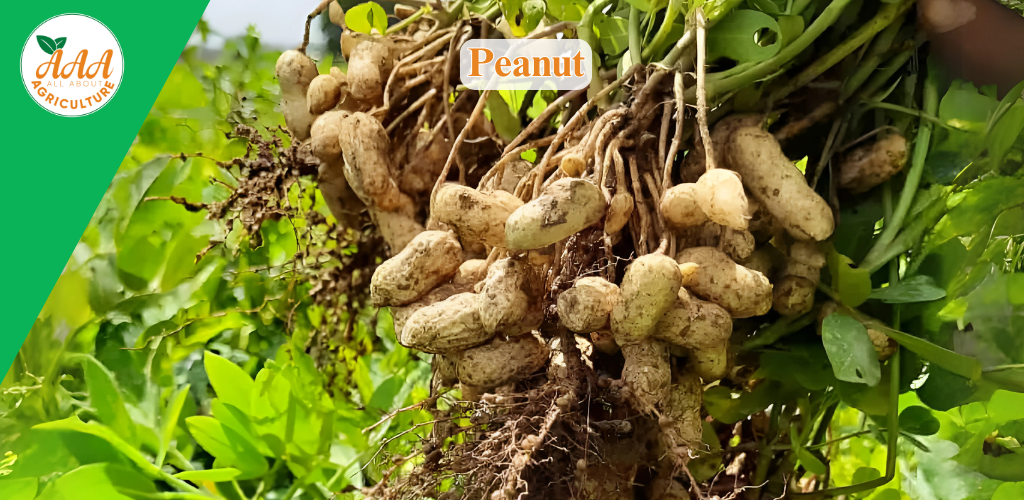Peanut Production Technology
Peanut Production Technology

Peanuts (Arachis hypogaea), also known as groundnuts, are a nutrient-rich, oilseed crop with high market demand. With scientific farming techniques and modern technology, farmers can achieve higher productivity, better quality, and increased profits while improving soil health.
Key Steps for Profitable Peanut Cultivation
Ideal Climate & Soil Conditions
Temperature: 25-35°C – Requires warm weather and moderate rainfall
Soil Type: Well-drained sandy loam to loamy soil (pH 6.0-7.5)
Water Requirement: Moderate irrigation, critical at flowering & pod formation
High-Yielding Peanut Varieties
Popular varieties: TAG 24, JL 24, GG 7, K 6, TMV 2
Disease-resistant types: ICGV 91114, GPBD 4 – Ideal for disease-prone regions
High oil-content varieties: Suitable for edible oil & export markets
Smart Sowing & Seed Treatment
Seed rate: 80-100 kg/ha for bunch type, 100-120 kg/ha for spreading type
Best sowing time:
- Kharif (Monsoon crop): June-July
- Rabi (Winter crop): October-November
- Summer crop: January-February
Seed treatment: Treat with Rhizobium & PSB (Phosphate Solubilizing Bacteria) to boost nitrogen fixation & root growth
Nutrient & Water Management
Balanced fertilization:
- Nitrogen (N): 20-30 kg/ha
- Phosphorus (P): 40-60 kg/ha
- Potassium (K): 30-40 kg/ha
Irrigation schedule: Essential at flowering, peg formation, and pod development stages
Weed, Pest & Disease Control
Weed management: Use Pendimethalin (pre-emergence herbicide) for effective weed control
Common pests: Aphids, leaf miners, red hairy caterpillars – Managed using Neem-based bio-pesticides
Disease control: Tikka leaf spot, Rust, Stem rot – Prevent with crop rotation & fungicide applications
Harvesting & Post-Harvest Management
Harvest when leaves turn yellow & pods are fully developed
Proper drying ensures higher oil quality & better market price
Average yield: 2.5-3.5 tons per hectare.